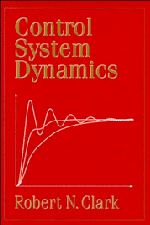Book contents
- Frontmatter
- Contents
- Preface
- 1 Introduction to Control System Engineering
- 2 Mathematical Models of Mechanical Systems
- 3 Mathematical Models of Electrical Systems
- 4 Mathematical Models of Electromechanical and Electrohydraulic Systems
- 5 Summary of Modeling Principles for Physical Systems
- 6 Solution to the Initial-Value Problem
- 7 Pole-Zero Methods of Analysis for Single-Input-Single-Output Systems
- 8 Automatic Feedback Control
- 9 Dynamic Analysis of Feedback Control Systems
- 10 Design of Feedback Control Systems
- 11 Frequency Response Analysis of Linear Systems
- 12 Stability Analysis by Nyquist's Criterion
- 13 Dynamic Analysis of Feedback Systems by Frequency Response Methods
- 14 Design of Feedback Systems by Frequency Response Methods
- 15 Advanced Topics
- Appendices
- Answers to Problems
- Bibliography
- Index
1 - Introduction to Control System Engineering
Published online by Cambridge University Press: 05 June 2012
- Frontmatter
- Contents
- Preface
- 1 Introduction to Control System Engineering
- 2 Mathematical Models of Mechanical Systems
- 3 Mathematical Models of Electrical Systems
- 4 Mathematical Models of Electromechanical and Electrohydraulic Systems
- 5 Summary of Modeling Principles for Physical Systems
- 6 Solution to the Initial-Value Problem
- 7 Pole-Zero Methods of Analysis for Single-Input-Single-Output Systems
- 8 Automatic Feedback Control
- 9 Dynamic Analysis of Feedback Control Systems
- 10 Design of Feedback Control Systems
- 11 Frequency Response Analysis of Linear Systems
- 12 Stability Analysis by Nyquist's Criterion
- 13 Dynamic Analysis of Feedback Systems by Frequency Response Methods
- 14 Design of Feedback Systems by Frequency Response Methods
- 15 Advanced Topics
- Appendices
- Answers to Problems
- Bibliography
- Index
Summary
Background
Dynamics plays the central role in automatic control engineering. The analytical techniques and design principles examined in this book are simply methods of dealing with dynamics problems from the specialized point of view of the automatic feedback control system. This collection of methods and procedures – known as servomechanism theory, basic control theory, and, in recent years, as classical control theory – constitutes the basic subject to be mastered by a beginning control system engineer.
A typical automatic control system consists of several interconnected devices designed to perform a prescribed task. For example, the task may be to move a massive object such as the table of a machine tool in response to a command. The interconnected devices of the system are typically electromechanical actuators, sensors that measure the position and velocity of the controlled object and the currents or voltages at the actuator, and a control computer that processes the sensor signals along with the command. These interconnected dynamic elements work simultaneously, and they also embody a feedback connection. Frequently the engineer must determine the dynamic response of the entire system to a given command when only the physical properties of the individual component elements of the system are known. This formidable task requires quantitative dynamic analysis even in relatively simple systems.
Modern Control Theory and the Digital Computer
Classical control theory is directly applicable to systems which have only single input variables and single response variables.
- Type
- Chapter
- Information
- Control System Dynamics , pp. 1 - 4Publisher: Cambridge University PressPrint publication year: 1996

